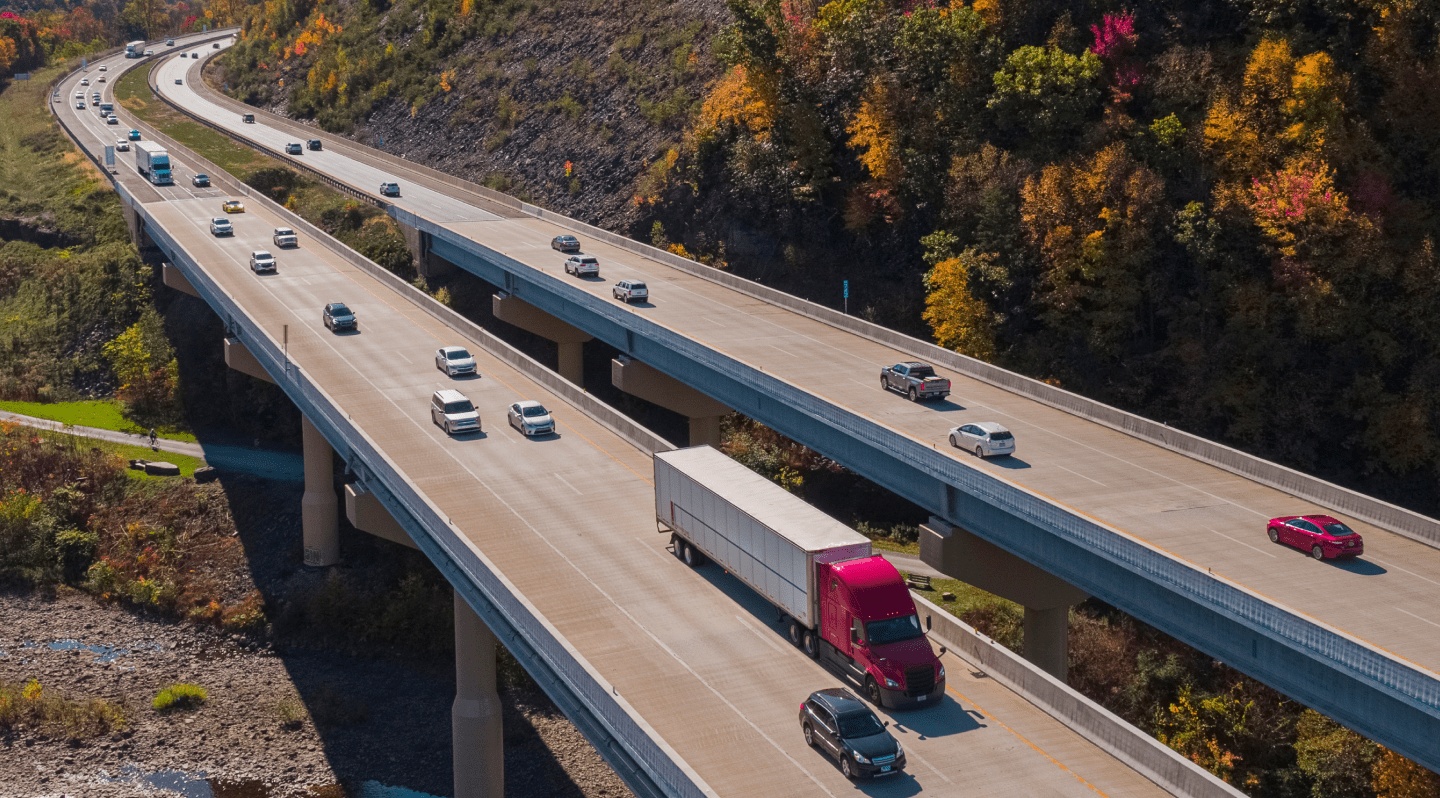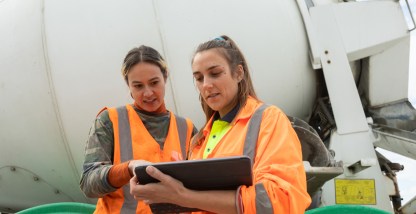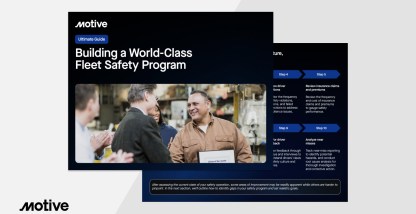National Safety Council statistician Ken Kolosh explains what’s behind an uptick in work-relasted incidents — and how to prevent them.
As summer heats up, the National Safety Council is drawing attention to the fact that preventable injuries are the fourth leading cause of U.S. deaths. Every industry works to improve safety. Recently though, more workers are dying on the job than before the COVID-19 pandemic began. In fact, the risk of death to workers is higher now than at any time since 2016. In 2021, the National Safety Council (NSC) tracked 5,190 fatal work injuries, an 8.9% increase over 2020.
Two industries consistently account for the most worker deaths: construction and transportation/warehousing.
The NSC reports that the construction industry experienced the most deaths in 2021, while transportation had the highest rates of injury and illness that involved days away from work.
So why do the construction and transportation industries struggle to keep their fleet drivers and workers safe?
We recently spoke with Ken Kolosh, statistician for the NSC. He explained, “In general, our roads have been less safe since the pandemic,” largely due to changing behaviors.
With fewer cars on the road in the early days of the pandemic, drivers were more likely to speed or engage in risky behaviors. The National Highway Traffic Administration reported that crash deaths increased in 2020 despite a huge drop in the number of miles driven, with more deaths resulting from speeding, unbelted passengers, and high blood-alcohol concentrations.
Even as stay-at-home orders ended and more drivers returned to the roads, these bad behaviors had become ingrained habits. Today, speeding is a factor in more than one in four traffic fatalities.
As heavy users of public roads, construction and transportation workers are at greater risk of incidents. However, fleet managers can take important steps to increase the safety of their drivers — and the general public. These four proactive changes can make the roads safer for everyone.
1. Use AI to identify the hazards
Kolosh says that fleets can start improving driver safety by working to better understand which specific hazards their drivers face. “We have to do a better job of identifying and resolving hazards before a worker dies,” he says. “The first step is the collection of data in order to identify those hazards before the worst happens. All organizations have to systematically make sure they’re collecting the right data.”
Today’s AI-powered fleet management solutions can help fleets collect this data to understand trends and opportunities for improvement. For example, Motive AI Dashcams can identify driver behaviors like speeding, following too closely, or seatbelt usage. These hazards can then be scored and ranked in a dashboard, helping a fleet manager quickly prioritize the most dangerous or prevalent behaviors.
Such data are especially useful in industries like construction and transportation, where a fleet’s drivers may be working solo, far from headquarters.
Kolosh notes, “The best way to keep workers safe is not by wearing PPE. It’s by eliminating the hazards in the first place.” Collecting and understanding data on incidents of all types enables fleet managers to identify new ways to reduce their risks.
2. Involve everyone in your fleet
Fleet and driver safety doesn’t improve by simply identifying hazards. Rather, Kolosh says, “It’s about taking proactive, preventative measures instead of reactive measures.” And those proactive measures only succeed when drivers take part in the conversation.
“Every employee owns safety — not just managers,” Kolosh says. “Getting everyone involved is really where it works best.”
Fleet managers can take the data they’ve collected and prioritized, then use it to actively coach drivers to improve behaviors. Using footage from the Motive AI Dashcam, fleet managers can show drivers exactly how close they came to a crash— or how their quick defensive driving prevented a crash. That same footage can also exonerate a driver from a false accusation.
Coaching should be part of a larger, comprehensive driver safety program that involves the entire organization, Kolosh says. “Workers need to be more involved in the solution. There’s a critical component in a systematic safety program where they should be involved in reporting hazards and do hazard walk-arounds to identify environments and potential opportunities that could lead to an incident.” That could mean “toolbox talks” or other types of team meetings where drivers learn from each other.
And coaching shouldn’t be a one-and-done occurrence. Rather, drivers should regularly receive coaching in various forms, from one-on-one sessions to reviewing their own dash cam videos. Ongoing reinforcement is the best way to foster lasting change.
3. Empower drivers to be safer
As part of ongoing coaching, drivers should feel empowered to do their work as safely as possible. Help drivers connect the dots between their actions and their safety by sharing fleetwide data, celebrating safety improvements, and encouraging drivers to learn from each other.
Don’t let drivers despair about the growing risks on the roads. Rather, help them see how combining technology and coaching can help them take control of the situation.
Most importantly, Kolosh says, connect your coaching and lessons with workers’ day-to-day responsibilities, “so that when they get back on the jobsite, they know what to do in order to bend the curve and prevent workplace fatalities.”
Depending on the size of your fleet, you can try several things to track driver safety improvements, such as:
- Creating a fleet dashboard to show improvements in safety metrics.
- Recognizing drivers with the safest records and those who improve.
- Sharing video of drivers whose quick thinking and smart defensive driving averted a crash.
Also stress that you have your drivers’ backs. For example, dash cam footage can help exonerate drivers from false claims — which can cut insurance and claims costs while protecting your fleet’s reputation.
4. Stress the less tangible benefits of safety
Improving your safety record not only saves lives and prevents injuries, but it can also improve fleet profitability.
Kolosh says, “Improving safety often improves productivity, quality, and the bottom line. It’s not just about keeping employees safe; it’s good business.”
Make sure your drivers make this connection. After all, a safer fleet is a more successful fleet — one that can improve job security and satisfaction.
The National Safety Council has an important mission
The National Safety Council highlights the leading causes of preventable injury and death so people can live their fullest lives. Visit nsc.org/nsm to learn how to keep your workers safe in the summer and all year-round.
How Motive can help improve fleet safety
When you blend the Motive AI Dashcam with a dedicated coaching program, your team can benefit from fewer incidents, safer fleet drivers, and a stronger bottom line. Download our comprehensive guide to building a coaching safety program (which includes the most common coachable issues), then request a demo to get started.










